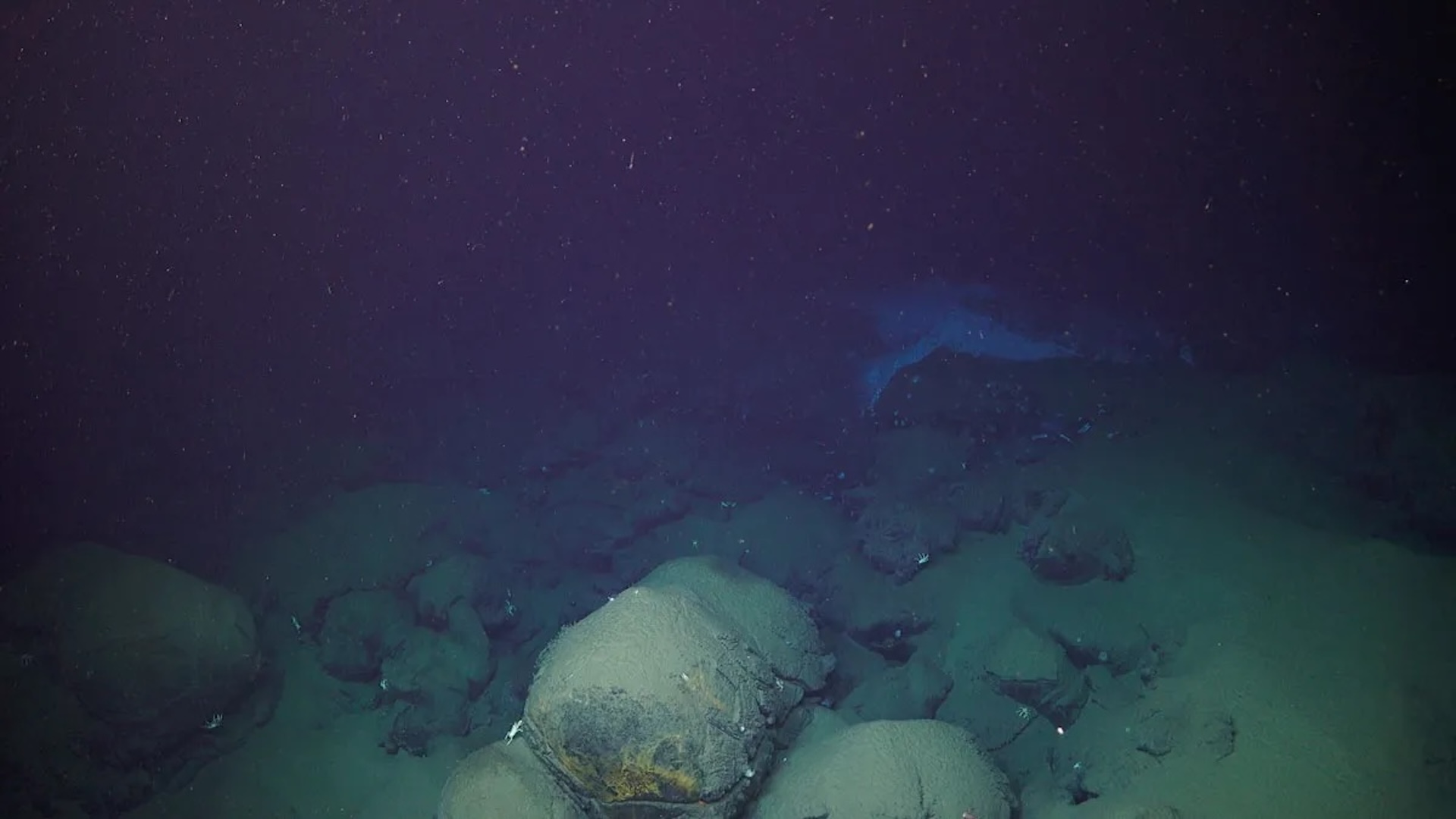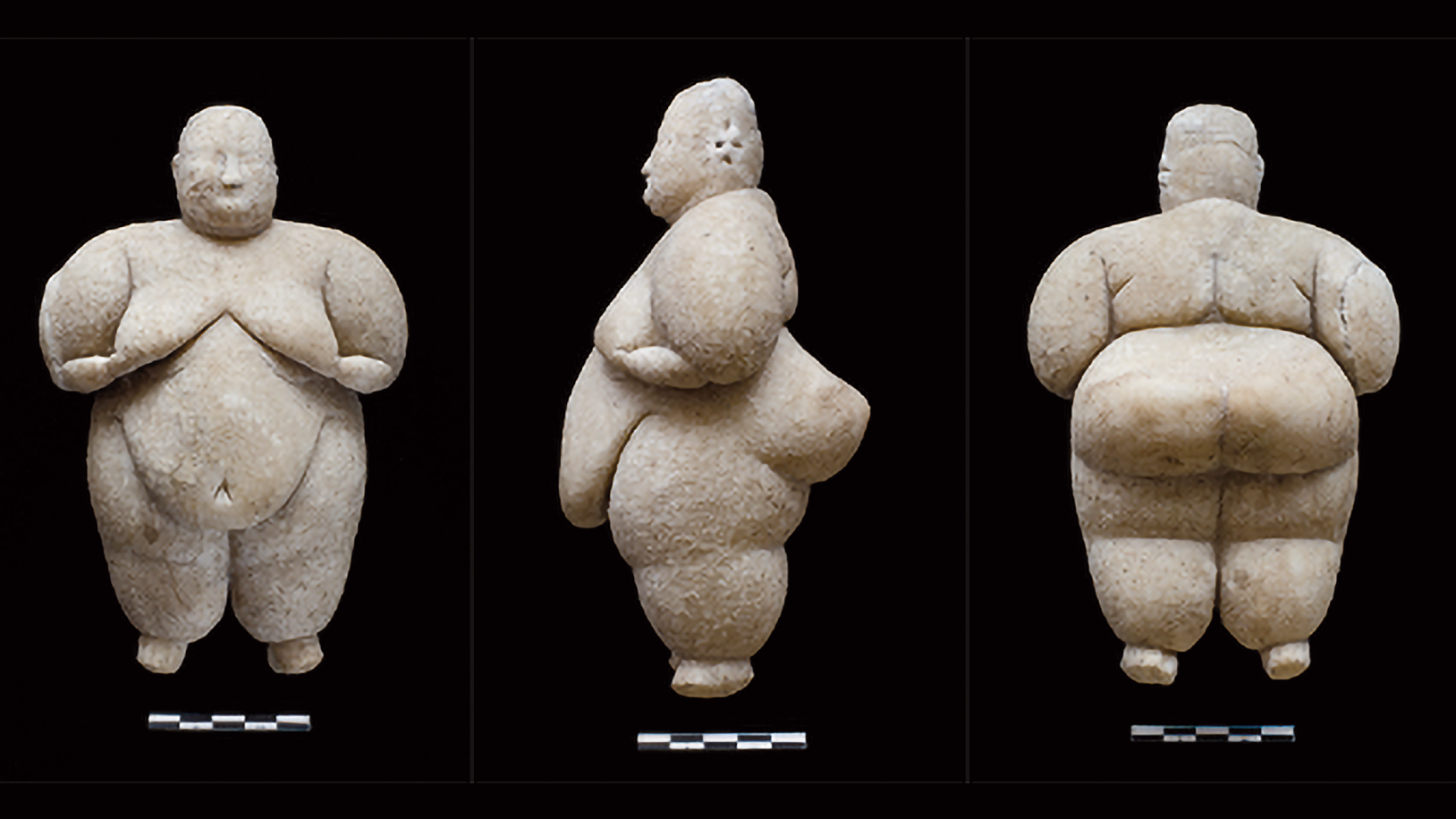Tonga eruption entombed deep-sea life in ash
When Hunga erupted in 2022, ash "decimated" slow-moving species living on the seafloor. More mobile species were able to hoof it out of harm's way.

In April 2022, a team of scientists was on a research vessel in the Lau Basin near Tonga to study the animals that live around hydrothermal vents in the deep sea. But when they lowered a remotely operated vehicle (ROV) down to a vent to search for the critters, they found the seafloor, normally a hard basalt surface, blanketed in sediment. They could see few snails and mussels.
"It was like a snow-covered landscape," said Roxanne Beinart, a marine microbial ecologist at the University of Rhode Island who was on the expedition.
Beinart and her colleagues suspected that they were looking at a coating of ash from the January 2022 eruption of the Hunga volcano, one of the most powerful eruptions ever recorded. The ashfall had completely transformed the ecosystem, killing off vulnerable mollusks.
RELATED: Record-breaking Tonga volcano generated the fastest atmospheric waves ever seen
The group recognized they now had a rare opportunity to document the effects of a volcanic eruption on marine ecosystems. They've published their initial findings in Communications Earth and Environment and intend to track the recovery of these ecosystems through time.
"This is a real opportunity to understand and to study the impacts of a large eruption—where we understand what happened, where we know the processes, we know the timescales involved — and to understand the impacts on the seafloor," said Isobel Yeo, a volcanologist at the United Kingdom's National Oceanography Centre who wasn't involved in the study.
An avalanche of ash
Over 24 days, the scientists surveyed six hydrothermal vent fields using the ROV and scooped up samples of sediment. Under the microscopes aboard the ship, "you could pretty quickly and easily see that it was just full of glass," said Shawn Arellano, a marine ecologist at Western Washington University who coauthored the study. Fine grains of glass are a telltale characteristic of volcanic ash.
Get the world’s most fascinating discoveries delivered straight to your inbox.
To see how deep the ash was, the group improvised a ruler using a long, T-shaped metal rod that the clawed arm of the ROV could hold and added colored markers every 7.6 centimeters (3 inches). They found that the ash was up to 1.5 meters (5 feet) deep at the sites closest to the volcano. And even 96 kilometers (60 miles) away, the ash at one site was still nearly 0.5 meter (2 feet) deep.
After the eruption, the ash likely dropped from the sky and sank in the water. The researchers think that as it landed and trickled down the volcano's submerged slopes, it picked up sediment and became denser, causing it to gain speed, like a snow avalanche does on land. The flow was able to "roar into the deep sea," said Mike Clare, a marine geoscientist at the National Oceanography Centre who wasn't involved in the study.
The ash had to travel over undulating terrain to reach the hydrothermal vents — a testament to how powerful the currents were. "One of the surprises of the study is that despite this irregular seafloor relief, the flows have been able to overcome this distance," Clare said.
Buried alive
All that ash had a big effect on marine ecosystems.
The scientists knew of an expedition that had visited the same hydrothermal vent sites in 2019, so they compared the footage from that expedition to the footage from their ROV. The contrast was stark. Some animals such as lobsters and crabs were crawling around on their videos, their populations not affected by the ash, but the snails and mussels they had come to study, many of which are endangered or vulnerable species, had taken a hit. "Those populations were decimated," Beinart said.

Beinart and her colleagues suspect the mollusks were the most affected in part because they are less mobile. Mussels, for example, extend strong fibers that attach to a hard surface so they can "pull themselves along like Spiderman," Arellano said. These organisms' metabolisms also require a symbiotic relationship with bacteria, and that relationship requires a lot of oxygen. When the ash landed on these animals, their need for oxygen outpaced their ability to escape from under the ash, and they suffocated.
The researchers will return to the region in 2026 to track the changes to the hydrothermal vent sites. "We're focused on trying to understand the recovery of these systems and the dynamics of how they might cope," Beinart said.
Clare noted that scientists know from other regions with volcanic activity that this ecosystem will recover, but how quickly that will happen and how it will play out are unknown. "Whilst this study is a really valuable and useful one, I suspect its value as a baseline will become apparent over the coming decade as we start to revisit and see how the seafloor changes," he said.
This article was originally published on Eos.org. Read the original article.
Andrew Chapman is a freelance science journalist based in Truckee, California. I write about life sciences and the environment. My work has appeared in Scientific American, Science Magazine, Eos, and Hakai Magazine, amongst others.
